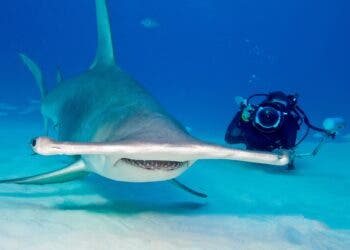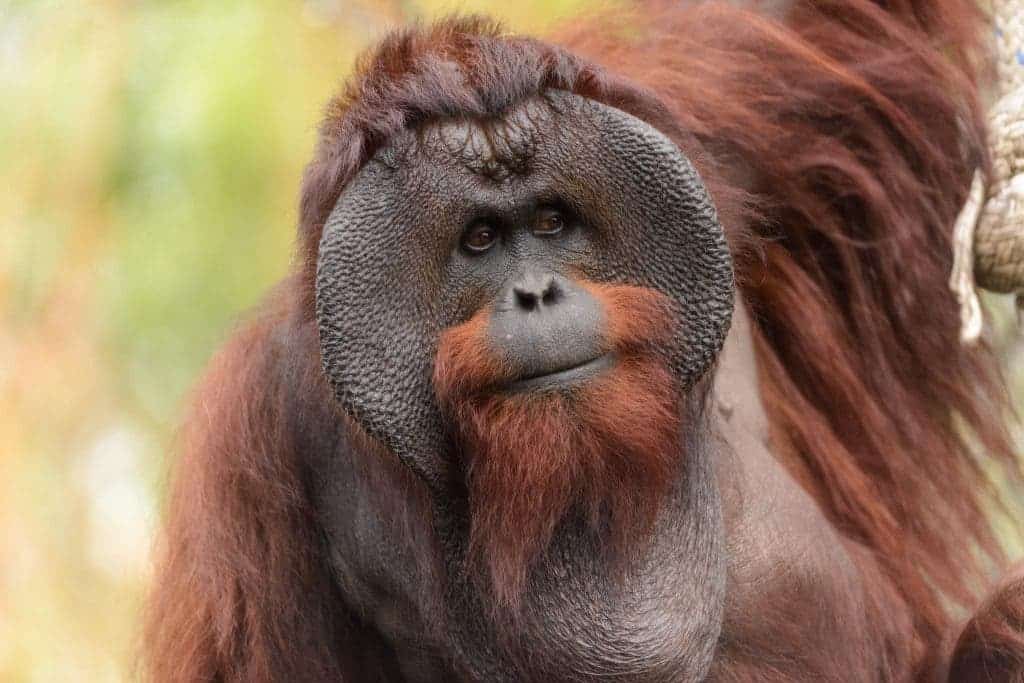Every summer, female great hammerhead sharks, gather at the Rangiroa and Tikehau atolls in French Polynesia, especially around the full moon — and no one is sure why. The sharks, a critically endangered and typically solitary species, don’t seem to interact with each other for the meeting, which makes it all the more mysterious.

Great hammerheads (Sphyrna mokarran) are the biggest of the nine hammerhead shark species, mostly known for their T-shaped heads that resemble a hammer. They can weigh up to 450 kilograms (almost 1000 lbs) and live in tropical waters around the world. They are solitary skilled hunters, largely feeding on fish, rays, squids, and other smaller sharks.
An international team of researchers passively watched a group of great hammerheads at the Rangiroa and Tikehau atolls between December and March of 2020 and 2021 — the peak of the summer. They recorded 54 female sharks and one whose sex couldn’t be determined at the atolls.
Along with observing the sharks directly, the researchers used videos recorded by citizen scientists over a 15-year period. This allowed them to identify another 30 sharks, most of which were females, visiting the atolls between 2006 and 2019. About half of the sharks are seasonal residents, spending up to six days per month at one of the atolls.
“This study, conducted in situ with non-invasive methods offers a unique opportunity to study a great hammerhead shark population in a near-pristine ecosystem and provides important life-history elements for the Central Pacific region,” the researchers wrote in their paper, recently published in the journal Frontiers in Marine Science.
Sharks and the moon
This big shark is a solitary species, so the fact that the team spotted many female individuals at the same time at the atolls suggests that the area is an aggregation site. They are likely drawn by external factors, the researchers said, that appear to be connected to the lunar cycle and the presence of ocellated eagle rays (Aetobatus ocellatus).
The number of sharks peaked before and after a full moon in 2020 and 2021. The increased moonlight may improve the shark’s ability to hunt around the atolls at night, the researchers said. The sharks could also be responding to changes in geomagnetic fields, which can happen under a full moon, as they are very skilled in sensing these changes.
There are also other potential reasons. Sharks are gathering at an area with high numbers of ocellate eagle rays, which enter the atolls to reproduce every year. Sharks prey on these rays and could be predicting their arrival in the atolls, the researchers said. They also believe that the warmer temperature in the atolls could be luring in the sharks.
While they couldn’t confirm the exact reasons for this phenomenon, the study shows how important the atolls are for great hammerheads — a critically endangered species that needs further protection. Their population is declining due to overfishing, habitat degradation and low reproduction rates. The researchers will continue looking at sharks’ links to the atolls.






